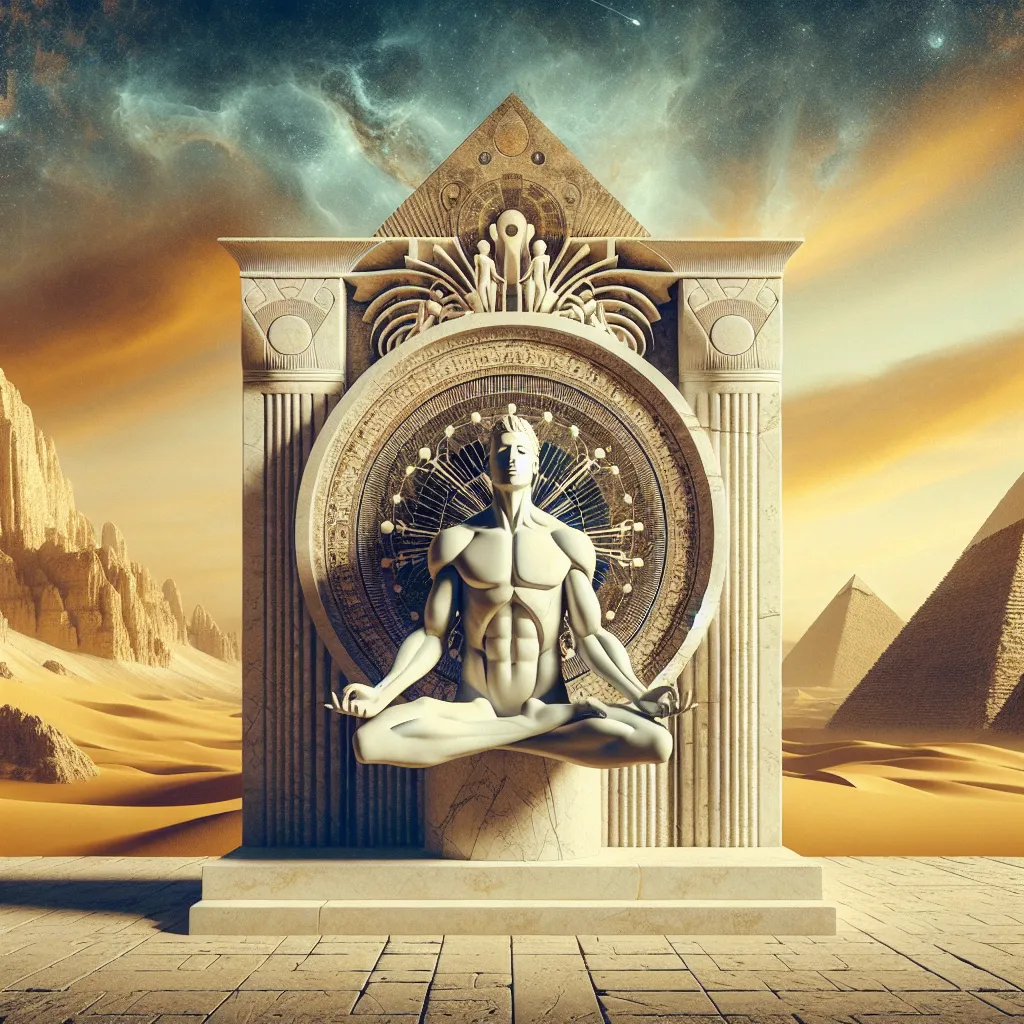
- Published on
- Authors

- Name
- You
The Breath of Life: Ancient Egyptian Breathwork Practices
Introduction
Ancient Egypt has long been a wellspring of esoteric wisdom, steeped in symbolism and mysticism. Among its many gifts lies a set of breathwork techniques designed to enhance both spiritual and physical well-being. These practices, rooted in an understanding that modern science is only beginning to appreciate, offer a glimpse into a culture that revered the breath as a vital life force.
The Science Behind Breathwork
Physiological Benefits
Modern science validates that controlled breathing influences the autonomic nervous system, which governs functions such as heart rate, digestion, and respiratory rate. Techniques like diaphragmatic breathing and alternate nostril breathing can:
- Reduce stress by activating the parasympathetic nervous system.
- Enhance focus by increasing oxygen flow to the brain.
- Improve digestion by stimulating vagus nerve activity.
| Technique | Benefits |
|---|---|
| Diaphragmatic Breathing | Stress reduction, improved lung capacity |
| Alternate Nostril Breathing | Enhanced mental clarity, balanced energy |
| Rhythmic Breathing | Stabilized heart rate, mood enhancement |
Breath in Ancient Egyptian Culture
Spiritual Symbolism
In ancient Egyptian cosmology, the breath was more than just a means of sustaining life; it was a conduit for spiritual energy. The word "shu," representing the god of air and light, also meant "to breathe." Breathwork was thus an integral part of meditative and prayer practices.
Practical Application
Daily Rituals: The daily routines of ancient Egyptians included specific times for meditative breathwork, often integrated into morning and evening rituals. It was believed that these practices aligned the individual with the natural order, or "Ma'at," fostering balance and harmony.
| Time of Day | Practice | Purpose |
|---|---|---|
| Morning | Deep, slow inhalations | Invoking energy and readiness |
| Evening | Slow, calming exhalations | Inducing relaxation and introspection |
| Meditation | Sustained, rhythmic breathing | Deepening spiritual connection |
A Holistic Blend: Mystical Wisdom and Modern Insights
Exploring Techniques
1. Sekhem Seshat (Vital Breath)
This breathwork involved visualizing the breath traveling through energy channels (similar to nadis in yogic practices) and was used for both healing and meditation.
Practice Tip: Sit comfortably, visualize a golden light as you inhale through your nose, guiding this light to areas in need of healing, and exhale any tension or negative energy.
2. Ka Breathing
Ka, the spiritual double, was thought to be nourished by breath. This practice involved vocalized breaths to strengthen the Ka and improve vitality.
Practice Tip: Inhale deeply, vocalize a gentle "Ahh" on the exhale, focusing the sound to resonate within your chest, thereby "feeding" the Ka.
Ritual Integration
Integrating these breathwork techniques into modern spiritual practices can be immensely beneficial. Start with small, dedicated sessions and gradually increase the duration as you become more comfortable.
Conclusion
The breathwork techniques of ancient Egypt provide a rich tapestry of practices designed to enhance well-being on multiple levels. By blending these ancient practices with modern scientific understanding, we can unlock a holistic approach to health that honors both the mystical and the material.
Explore these breathwork techniques for yourself, and discover how the ancient wisdom of Egypt can bring balance and vitality to your life.
May the breath of life guide you to inner peace and well-being.
